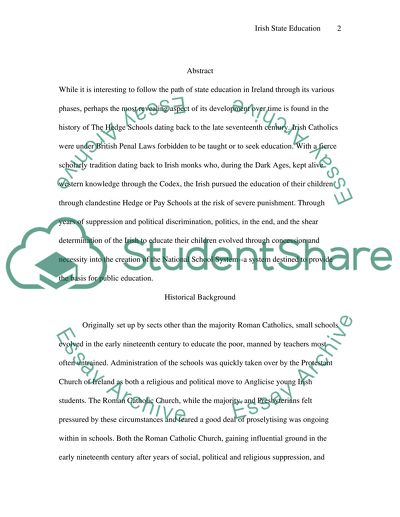Cite this document
(“The History of Irish Education Part B Essay Example | Topics and Well Written Essays - 1750 words”, n.d.)
Retrieved from https://studentshare.org/environmental-studies/1405269-the-history-of-irish-education-part-b
Retrieved from https://studentshare.org/environmental-studies/1405269-the-history-of-irish-education-part-b
(The History of Irish Education Part B Essay Example | Topics and Well Written Essays - 1750 Words)
https://studentshare.org/environmental-studies/1405269-the-history-of-irish-education-part-b.
https://studentshare.org/environmental-studies/1405269-the-history-of-irish-education-part-b.
“The History of Irish Education Part B Essay Example | Topics and Well Written Essays - 1750 Words”, n.d. https://studentshare.org/environmental-studies/1405269-the-history-of-irish-education-part-b.


